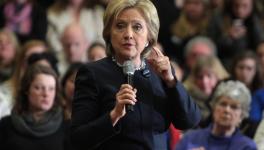Why Can't We Get Anyone to Ask a Wall St. CEO the Hard Questions?
But, Wednesday morning was an exercise in how prepped bankers can deflect less-prepped commissioners' questions with seriously delivered circular reasoning. And, it was exasperating. (Les Leopold, author of The Looting of America, provides an excellent, detailed play-by-play of the morning's events.)
I have been writing about reinstating Glass-Steagall since I left banking in 2002. I explored how findings from the Pecora commission, which investigated the most risky bank practices during the early 1930s, contributed to the creation of a more restrained banking landscape, in which commercial banks take less risk and receive government support, and investment banks take more and get zilch.
So far, it's clear; we're not going down that road with this commission.
The CEOs punted every single question on anything that mattered in terms of the link between their practices and the crisis (the entire point of the commission). They deflected questions on leverage, trading revenue breakdowns, and on the amount of standard OTC derivatives (over-the-counter; think generic pharmaceuticals) vs. non-standard ones (which the bankers referred to as ‘bespoke,' basically tailored—think expensive exotic pharmaceuticals). The equivalent of the-dog-ate-my-homework excuse was given no reprimand, just a polite, okay, well, get back to us when you have that information.
You could cast blame, share blame, whatever. But, the reason some banks went bankrupt and some almost did, once you wipe away all the complex lingo, was that they didn't have enough money (capital) to back their bets (complex securities stuffed with various mixes of mortgage loans, packages of loans and credit derivatives). This should be the crux of the commission's investigation. How did that happen, who did it, how can we make sure it won't happen again? Show us your numbers first, then we'll talk.
When you are out at sea, drowning and someone throws you a life raft that gets you back to shore safely, you survive—and perhaps for that moment, you don't even need the life raft anymore. But, if you don't even get the life raft, you die. That is the simple difference between those CEOs and their firms, vs. much of the rest of the population.
At one point, Goldman had the help of $53.4 billion of federal money, not counting anything received through the Fed's discount window or other loan facilities for which the Fed will not disclose details, Judicial decisions to do so notwithstanding. JPM Chase got $99.8 billion including the government subsidizing its acquisition of Bear Stearns and WAMU (mergers not brought up by the commission). Bank of America received $228.4 billion including its merger with Merrill Lynch (not brought up), and Morgan Stanley was handed $36.2 billion.
Get the latest reports & analysis with people's perspective on Protests, movements & deep analytical videos, discussions of the current affairs in your Telegram app. Subscribe to NewsClick's Telegram channel & get Real-Time updates on stories, as they get published on our website.























